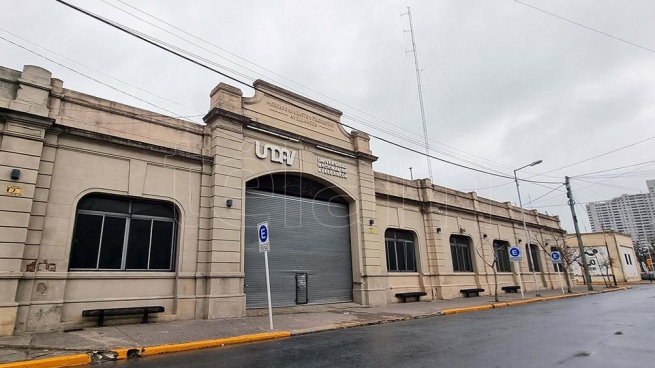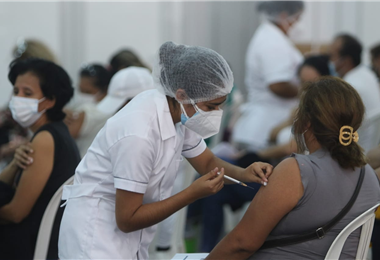A team of Argentine and Spanish cardiologists and surgeons, dedicated to heart research, will present this Monday, at the National University of Avellaneda (UndAv), a book by specialist in cardiovascular surgery Jorge Tranini, which includes his contributions to the development of a new paradigm on the knowledge of the anatomy and functioning of the organ responsible for pumping blood throughout the body.
The investigation led by Tranini led to the identification of a structure within the heart, which can be bony or cartilaginous, depending on the species, to which the fibers of the myocardial band cling; In addition, they pointed out the existence of a third suction movement between systole and diastole that opens the door to rethink techniques and therapies.
In dialogue with Télam, Tranini stated: “This research redefines classic concepts about the functioning of this vital organ, both in its anatomy and in physiology and cardiac mechanics, including the finding of a support point, a meeting point between the ascending segment and the posterior segment. right side of this muscle, which are the origin and end of the myocardial structure, which researchers call the fulcrum.
“The myocardium is inserted at its initial and final ends in this piece with a tendinous, cartilaginous, even bone structure, depending on the species analyzed, which is located below and in front of the aorta”, accurate.
In addition, the scientific team observed that, within the cardiac contraction mechanism, there is friction between the muscle layers, which requires an anti-friction system that uses intramyocardial hyaluronic acid as a lubricant.
“Without this new antifriction mechanism, myocardial contraction would be practically impossible due to the great dissipation of energy,” Tranini considered.
Miguel Angel Garcia Fernandezprofessor of Medicine-Cardiac Imaging at the Faculty of Medicine of the Complutense University of Madrid, highlighted that “This first proposal is the real Gordian core of the scientific proposal and the advance in the puzzle of cardiac function proposed by Trainini: a continuous muscle that needs a point of support and the need to have an anti-friction mechanism, a revolutionary conceptual triad” .
The research also reveals a third movement of the heart with respect to the classic systole-diastole, called “active phase of suction”.
According to the classical theory, the blood that left the heart returned to the organ with the same force with which it left, however Tranini maintains that “the filling of the blood in the organ is caused through an intermediate phase between systole and diastole that we notice and name as active phase of suction”.
Trainini maintained that “the heart was taught as a structure and a function that was not the exact one, it was always taught as a two-dimensional structure, it was seen as a homogeneity, like wanting to know a city by looking at its outer walls; when we penetrate we better understand that structure and its function that go hand in hand”.
“The heart folds on itself in a helicoid structure, when it ejects blood it is as if a towel were being wrung out and when it sucks blood it is as if it were unwrapping, this observation led us to find the support of the heart, which in some species is more bone and in others more cartilaginous,” he said.
The specialist recalled: “we wondered how it was possible to think of the heart suspended in the thoracic cavity without having a point of support to help it pump blood at a rate of 200 cubic centimeters per second, looking for that explanation we found this bone which we named ‘fulcrum’ and that is where the fibers of the heart are attached.
“We broke about a thousand hearts before we could understand what was happening because you have to open them at the right point to identify the fulcrum, it was exciting to see the insertion of the muscle in that structure that supports it,” he added.
Regarding cardiac mechanics, Tranini warned that “the use of equations based on the concept of energy (integrated variables) in a ventricular chamber, turns out to be more evident than simply expressing the function in terms of a pressure variable, since the concept of blood pressure is determined by the properties of the vascular system and by the capacity of the heart”.
In this sense, he clarified that “although this concept is correct, the notion that the output volume is synonymous with the function capacity of the heart is apparent; for example, the right ventricle and the left ventricle eject similar volumes, but their energies are different Hypothetically, if the diameter of the aorta is reduced, the output volume falls, this implies that the volume changes according to the resistance, therefore the output volume is not an independent value, while the volume of Ejection reflects the capacity of the heart as a function of two independent variables: energy output and systemic vascular resistance.”
“According to these considerations, it would be more logical to speak of cardiac ejection energy as a parameter that summarizes the cardiac potential and to which variables that are not independent would concur.; In the process of investigating cardiac energy, suction energy and ejection energy should be determined as more reliable parameters of ventricular function,” he added.
This Monday, June 13, Trainini and team will advance the main aspects of their work and the work “El corazón helicoidal. Fulcrum y torsion” in a conference reserved for scientific and specialized journalism at the UNdAv headquarters, in Spain 350 of the party Avellaneda from Buenos Aires, at 4:00 p.m.









